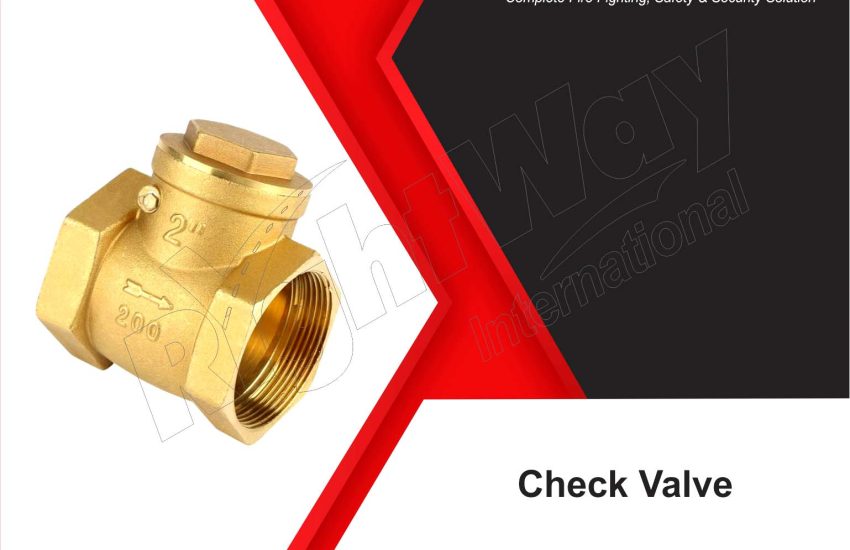What is Check Valve ? Check valves are essential components in fluid systems, designed to allow flow in one direction while preventing backflow. This article provides a comprehensive overview of check valves, their types, functions, and applications, optimized with detailed keywords for better search engine visibility.
What is a Check Valve?
A check valve, also known as a non-return valve, is a mechanical device that ensures the unidirectional flow of liquids and gases. It is commonly used in various industries to protect equipment and maintain system integrity.
Key Functions of Check Valves
- Prevent Backflow: Stops the reverse flow of fluids, protecting pumps and other equipment from damage.
- Maintain Pressure: Helps maintain system pressure by preventing backpressure conditions.
- Ensure Safety: Reduces the risk of accidents by preventing the unintended flow of hazardous materials.
Types of Check Valves
- Swing Check Valves:
- Utilize a swinging disc that opens and closes with the flow direction. Ideal for applications with low flow rates.
- Lift Check Valves:
- Use a disc that lifts off its seat to allow flow, commonly found in high-pressure applications.
- Ball Check Valves:
- Feature a ball that moves to open or close the flow path, suitable for preventing backflow in smaller pipelines.
- Diaphragm Check Valves:
- Utilize a flexible diaphragm to control flow, offering reliable sealing and excellent performance in various applications.
Benefits of Using Check Valves
- System Protection: Prevents damage to pumps and pipelines from backflow, extending equipment life.
- Operational Efficiency: Maintains consistent flow and pressure, optimizing system performance.
- Simple Design: Typically have fewer moving parts, making them easy to install and maintain.
- Versatile Applications: Suitable for a wide range of industries, including water treatment, oil and gas, and HVAC systems.
Applications of Check Valves
- Water and Wastewater Treatment: Protects pumps and ensures smooth operation in treatment facilities.
- Oil and Gas Industry: Prevents backflow in pipelines, enhancing safety and efficiency.
- HVAC Systems: Maintains proper airflow and prevents unwanted backflow in heating and cooling systems.
- Chemical Processing: Safeguards against reverse flow of hazardous chemicals.
Selecting the Right Check Valve
When choosing a check valve, consider the following factors:
- Fluid Type: Ensure the valve material is compatible with the fluid being handled.
- Pressure and Temperature Ratings: Select a valve that can withstand the specific conditions of your application.
- Installation Orientation: Some check valves have specific installation requirements based on their design.
- Size and Flow Rate: Ensure the valve can accommodate the required flow rate for optimal performance.
Conclusion
What is Check Valve? Check valves are crucial for maintaining the efficiency and safety of fluid systems. By understanding their types, functions, and benefits, businesses can make informed decisions to enhance their operations.


